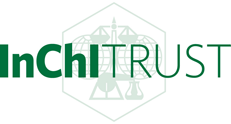Martyn L.Chiltona, Anne Marie Api, Robert S.Foster, G. FrankGerberick, MauraLavelle, Donna S.Macmillan, MihwaNa, Devin O'Brien, Catherine O'Leary-Steele, Mukesh Patel, David J.Ponting, David W.Roberts, Robert J.Safford, Rachael E.Tennant
Reg Tox and Pharm (133) 105200, 2022.
Published: (Mar/2022)
DOI: https://doi.org/10.1016/j.yrtph.2022.105200
Abstract:
The Dermal Sensitisation Thresholds (DST) are Thresholds of Toxicological Concern, which can be used to justify exposure-based waiving when conducting a skin sensitisation risk assessment. This study aimed to update the published DST values by expanding the size of the Local Lymph Node Assay dataset upon which they are based, whilst assigning chemical reactivity using an in silico expert system (Derek Nexus). The potency values within the expanded dataset fitted a similar gamma distribution to that observed for the original dataset. Derek Nexus was used to classify the sensitisation activity of the 1152 chemicals in the expanded dataset and to predict which chemicals belonged to a High Potency Category (HPC). This two-step classification led to three updated thresholds: a non-reactive DST of 710 μg/cm2(based on 79 sensitisers), a reactive (non-HPC) DST of 73 μg/cm2 (based on 331 sensitisers) and an HPC DST of 1.0 μg/cm2 (based on 146 sensitisers). Despite the dataset containing twice as many sensitisers, these values are similar to the previously published thresholds, highlighting their robustness and increasing confidence in their use. By classifying reactivity in silico the updated DSTs can be applied within a skin sensitisation risk assessment in a reproducible, scalable and accessible manner.

